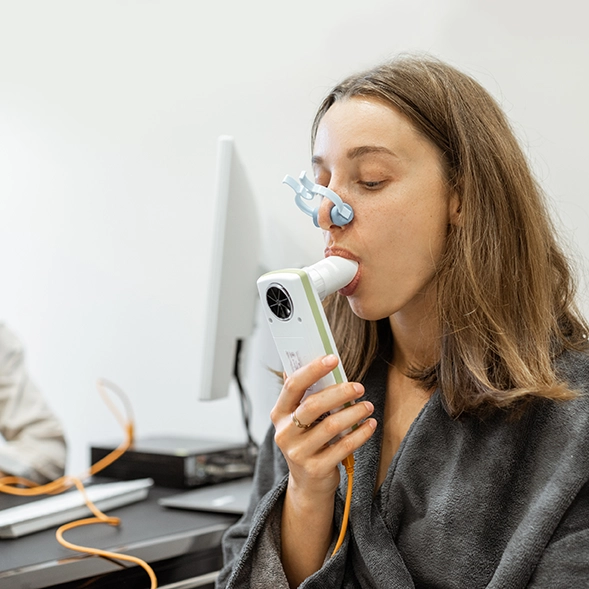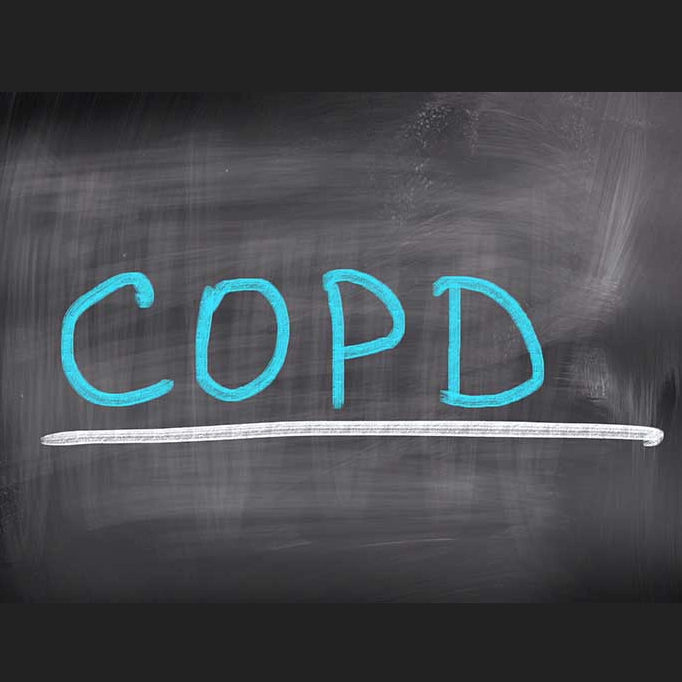Speaker: Dave Singh
A late-breaking abstract on a Phase II study investigating the anti-interleukin (IL)-33 mAb in chronic obstructive pulmonary disease (COPD) was presented. The study was designed to explore efficacy signals and identify responder subgroups, which differs from the definitive answers sought in Phase III studies. The biology of IL-33 signaling was highlighted, emphasizing its role as an epithelial-derived alarmin that responds to danger signals. This cytokine, part of the alarmin family, broadly affects type 2 and non-type 2 inflammation. Additionally, an oxidized form of IL -33 that acts through the receptor for advanced glycation end products (RAGE) pathway and promotes mucus hypersecretion was discussed, influencing the study's design. The study population was enriched with COPD patients suffering from chronic bronchitis, including current and former smokers, and a broad range of eosinophil counts. A pre-planned subgroup analysis was conducted. The primary endpoint of the 28-week study was forced expiratory volume in one (FEV-1), with participants receiving 600 mg of Tozorakimab monthly. The rationale for selecting FEV-1 as the primary endpoint was that, over six months, an effect on exacerbations would not be expected. However, the drug's anti-inflammatory properties and its potential effect on mucus were anticipated to impact FEV-1. The data presented included complex results related to COPD exacerbations and exploratory endpoints.
In a Phase 2 study, 67 patients were included in the Tozorakimab group, while 68 patients were in the placebo arm. Patients who had experienced at least one exacerbation in the previous two years were selected for the study conducted during the pandemic. Nearly half of the participants had two exacerbations in the last year and most were on in-house steroids. Only 10% of the participants had eosinophil levels above 300 cells/µL, indicating that the population was not predominantly eosinophilic. The primary endpoint was assessed at week 12, revealing a 24 mL improvement in lung function with Tozorakimab, although this was not statistically significant. Throughout the study, Tozorakimab consistently demonstrated a better effect on lung function. Among frequent exacerbators—those with two exacerbations in the previous year—the effect increased to 69 mL. When refining the population for Phase 3, which included those with two exacerbations or hospitalization, the effect was noted to be 59 mL. A more substantial effect was observed in participants with higher eosinophil counts, while smoking status had no impact.
A pre-planned subgroup analysis showed that the effect increased to 39% among the exacerbation group; in the post-Phase 3 population, it was 36%. Interestingly, current smoking status and blood eosinophil counts did not significantly alter the outcomes, suggesting a potential impact of Tozorakimab across different types of inflammatory exacerbations, both type two and non-type two. An exploratory analysis of mucus plugging, assessed by counting the number of lung segments affected, revealed a reduction of 1.5 segments with Tozorakimab treatment after stratifying for baseline significance. In summary, this Phase 2 study served as a signal-finding investigation, with Tozorakimab showing a greater effect in patients with more frequent exacerbations, no difference related to current smoking status, and promising preliminary data on mucus plugging, indicating the potential benefits of anti-IL33 therapy in this context.
A participant raised a query regarding the assumption that a larger study would be conducted due to the promising outcomes despite the primary endpoint not being statistically significant. The speaker addressed the concern by stating that phase three studies had already commenced, with some attendees possibly being investigators. It was noted that the study population includes a broad range of eosinophil counts, encompassing both current and former smokers with a high risk of exacerbations. Additionally, it was emphasized that all patients in the latest studies are on inhaled steroids, which could influence blood eosinophil counts, and that no restrictions on blood eosinophil counts are applied. The patients are also receiving standard-of-care triple therapy.
European Respiratory Society Congress 2024, 7–11 September, Vienna, Austria.



